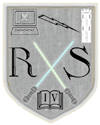
 |
Rogue Scholarship: An Introduction |
Rogue Scholars made their first appearance at the Western States Communication Association convention in 1996. This group of young and not-so-young Turks committed themselves "to making scholarly research and writing available and understandable to the general public, as well as to those scholars working in non-related fields." In his Rogue Scholars manifesto, Ted Coopman defined the Rogue Scholar as "a learned or etrude person no longer obedient to the status quo; playful, mischievous." Such a concept does not imply an anti-academic orientation, but rather a desire to take the scholarship that we within the profession share through our journals, conferences and conventions and make it accessible to publics beyond our closed community. Such a commitment implies the abandoning of jargon and esoteric constructs in favor of the "language of the street." While not all academic research may lend itself to this description, the plea to make what does "fit" available to those outside our community is hardly new, but it is a frustration that has rarely been acted upon. Indeed, there is a certain irony in the fact that the first four Rogue Scholar panels were presentations at national and regional conventions attended almost exclusively by other members of the field.
Happily, the presence of the Internet and of journals such as the American Communication Journal provides a unique opportunity to address this age-old urge. Here is an opportunity to step out of the tower and say to the public, "Here is stuff that can enlighten, engage and even possibly enhance your life, and it is stuff you do not need a degree or a thesaurus to understand." It is therefore fitting that the group of papers that follow (first presented to a group of fellow scholars at the Central States Communication Convention of this year) should now appear in these pages. Under the broad heading of "The Virtual Menace," These scholars examined the impact of the Internet in a variety of settings.
Three of the papers explore specific websites. Benoit and Benoit look at presidential campaign websites from the recent presidential primary season and establish criteria for their accessibility and utility to the voter. Stephanie Coopman undertakes a similar exploration of three websites established by and for individuals with disabilities. Rasmusson completes this group of papers by looking at the quality and nature of information on marijuana that is available in cyberspace.
In their articles, Kindred and Ted Coopman explore how the web is being used. Kindred compares the academic community's expectations about online classes with some of the limitations that have emerged from experience with these unique "classrooms." Ted Coopman provides a unique participant insight into how the Internet has been used to advance a group's efforts to bring about legislative change as he examines the Micro Radio Movement's battle with the FCC.
The final two papers in this collection look at how the emergence of the Internet is potentially impacting the way we live and do business. Millward suggests that the introduction of the Internet, a low context media (e.g., little or no contextual cues), into a rural community, a high context environment (e.g., extensive contextual cues) carries significant implications for a rural population. Madias asserts that the field of Journalism may be undergoing a major change in the "non-Euclidean world" of cyberspace that may restore it's lost role as storyteller.
Together these papers provide an eclectic and fascinating look at the "space" they are inhabiting, and invite the reader to consider the possibilities. So whether you are an academic or simply a person whose interest or need makes that material of value, read and enjoy.